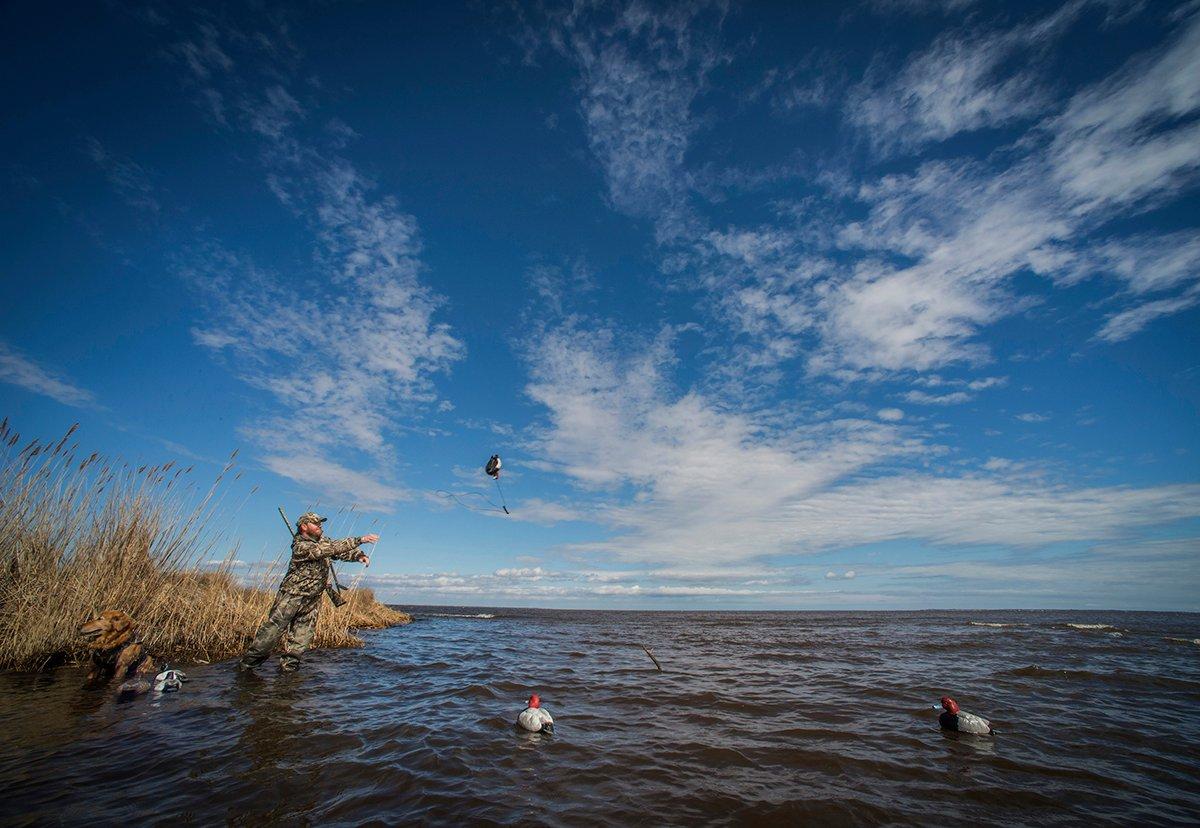Use these sneaky tactics to fool 'bills, cans and redheads

If cans, redheads, 'bills and other divers won't play fair, why should you? Use these sneaky tricks to turn the tables and lure more birds sure-kill close this fall.
Flagging
This goose hunting trick works for divers, too, and why not? Diving ducks respond well to motion, probably because they're accustomed to looking across vast areas of open water for visual clues of their brethren swimming or flying.
You can use a homemade hand-held flag painted black and white or one of the many commercial goose flags available nowadays. As distant divers fly by, raise and lower the flag to imitate ducks flying and landing. The motion might catch their eye and make them bank closer for a look. This tactic works especially well during calm conditions, when your decoy spread looks lifeless and divers don't finish well. And it will never hurt your chances.
Of course, if you hunt a relatively shallow area, you can combine flagging with a jerk-string decoy, spinning-wing decoys or another motion-creating rig. Some manufacturers offer floats that let you use spinners in deeper water, but be careful not to tip them over when running a boat in or near your spread. Also, they can topple during wavy conditions.
Channel Them
Diving ducks usually prefer to fly over water instead of land. It makes sense, considering their bodies are designed for water, not terra firma. You can use this trait to your advantage and actually funnel divers within range sometimes.
Look for relatively narrow waterways where divers travel, such as river mouths, channels between large sloughs or even the pinch point of an hourglass-shaped body of water. Divers might not want to land at those spots, but they'll typically fly over them rather than nearby shorelines on their way to and from roosts and feeding areas — especially with the right wind.
One caveat: These are travel corridors, not destinations, so birds might not slow down much as they pass by. Be prepared for some hardcore crossing shots. If current is a factor, be quick with finishing groundswats.
Roost Intercepts
Divers sometimes get into the pattern of roosting in areas of open water but then abandoning those spots to feed and loaf elsewhere during the day. Find the feeding areas or trading routes to them if possible. If you can't, however, look to intercept birds as they come back to roost.
Be very careful with this tactic. I am not suggesting that you set up at a roosting area. Yeah, it works — once. You'll usually enjoy a great shoot and blow the roost for the rest of the season.
Instead, glass birds during afternoons to see how they approach a roost. Then, set up along those routes — preferably downwind — to intercept groups as they return. Make sure you're far enough from the bedroom so gunshots and boat activity don't disturb birds massing at the roost. Even a mile isn't out of the question.
Most days, this tactic will net you an hour of good shooting before sunset. You'll enjoy extended action during windy conditions or when weather fronts approach. It's preferable to locate feeding and loafing areas birds use during daylight. Until you can, however, intercepting birds on their way to roost will net you some duck dinners.
Conclusion
Don't wait until the wind howls and the barometer plunges. Go dirty on divers this year. These tactics might not fill your boat during otherwise slow periods, but they'll add birds to your strap here and there throughout the season. Better, they let you be somewhat proactive instead of throwing out a blob of decoys and hoping.
Click here for more Realtree waterfowl hunting content. And check us out on Facebook.






